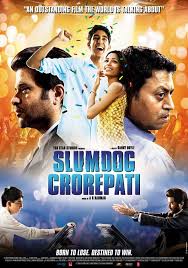We give you 5 solutions by which Indian cinema can widen its reach
In the article describing the biggest problem faced by the Indian film industry, we told you it was the multiplicity of languages that lead to audiences shunning certain films. In the following article, we attempt 5 solutions which could help the Indian film industry overcome this pproblem.
Subbing
Subtitles or captioning is one of the most effective ways of getting a film out there to an audience. Subtitles can be used very creatively, and one of its uses is to make a film accessible to someone unfamiliar with the language of the film. More often than not, these subtitles are in the English language, but can also be made available in other languages. Subtitles help an audience unfamiliar to the language follow a story line, become aware of mood and feeling, and allows them to fully enjoy the entire viewing experience.
One drawback of subtitling is that one often loses the essence of the film and some terms that are specifically only relevant to that language are lost in translation. Many subtitling practices either translate verbatim or else simplify the text to ensure appropriate reading speed.
Dubbing
Dubbing is a post-production process used in filmmaking most commonly referred to the replacement of the voices of the actors shown on the screen with those of different performers speaking another language. This is done mainly to make the film of another language accessible to an audience who does not understand the original language of the film. In India Hindi, Tamil and Telegu are the most popular languages for dubbing. English is also an option, but often dialogues appear a bit comical and out of context when dubbed in English. However, the advantage of this option over subbing is the audience doesn’t get fatigued reading subtitles, which can cause them to miss out on some action in the film. However, the dubbing quality may not always be up to the mark and are not always available for most films.
Remaking the film
Bollywood seems to be living on its remakes, whether from international or domestic cinema. The upcoming film, Action Jackson for example is a remake of Telegu movie Dookudu, 6-5=2 recently released in its Hindi was remade from a Kannada film with the same name. Hindi remakes are usually made of the south Indian language films and vies-versa, apart from Hollywood and other foreign films.
The Mani Ratnam formula
Though primarily directing movies in Tamil, Mani Ratnam is one of the few filmmakers who uses the unique formula of double-shooting. He tried this the first time in Hindi film Yuva, with the Tamil version being called Ayitha Ezhuthu. He simultaneously shot the film in Hindi as Yuva with an entirely different cast , while a dubbed version in Telugu was also released. The director chose to make two different versions of the film as he did not want the film to be dubbed, explaining that the essence of the script would be lost if they did so. What happens is that each scene is shot two times over with a different cast, speaking in both the languages. This acts as a go-between for dubbing and remaking the film, taking the best of both worlds. Ratnam has gone on to make Raavan (Hindi) and Raavanan (Tamil) apart from other films in this way.
Films in English
Hollywood, though not culturally relevant to Indian movie goers enjoys a bigger audience base in India, especially in urban areas. As a result, the audience who may not be able to access a large segment of their country’s movies due to the language divide will be able to watch a Hollywood movie because they understand English. This is why Hollywood cinema has a strong hold over the Indian audience.
Realizing this, many film makers have taken the option of making their films in English. One of the most popular examples being Slumdog Millionaire (2008); other movies like Fireflies, Ship of Theseus and A Decent Arrangement. More and more directors have begun to make their films in English so they might gain monopoly over the country’s growing English speaking population. English and Hindi being the most commonly spoken languages in the country, this is a viable solution when it comes to making Indian cinema accessible to the Indian as well as international audiences.

